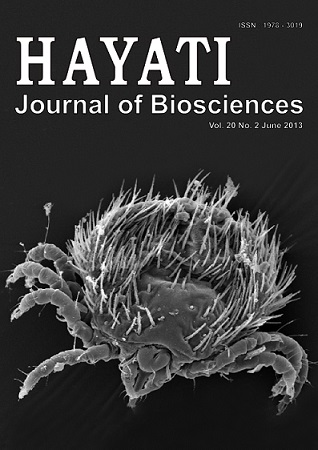Contribution of Alpha and Beta Diversity Across Land-Use Type to the Regional Diversity of Dung Beetles in Central Sulawesi
Abstract
The importance of spatial scale has been acknowledged as one of determining factors of species diversity in local and regional diversity. The aim of this study was to evaluate contribution of alpha (a) and beta (b) diversity across land-use type to gamma (g) diversity at the margins of tropical forest in Central Sulawesi using dung beetles (Coleoptera: Scarabaeidae) as a focal group. Baited pitfall traps set in four land-use types ranging from natural forest through cacao agroforestry systems to open areas during two years of sampling (2009 and 2012). A total of 28 dung beetle species belonging to four genera were captured during the study period. The results showed that contribution of b diversity was higher than that of a diversity of dung beetles. Each land-use type contributed about 56.5 to 62.5% of the total species richness (g diversity). The similar pattern of biodiversity between each spatial scale and during the two sampling years emphasized the large contribution of each land-use type to maintaining a high portion of the regional species richness. It suggests the importance of managing other land-use types, such as secondary forest and agroforestry as well as protecting the remaining natural forests.
Downloads
HAYATI J Biosci is an open access journal and the article's license is CC-BY-NC. This license lets others distribute, remix, tweak, and build upon author's work, as long as they credit the original creation. Authors retain copyright and grant the journal/publisher non exclusive publishing rights with the work simultaneously licensed under a https://creativecommons.org/

























.png) IPB University
IPB University Department of Biology
Department of Biology The Indonesian Biological Society
The Indonesian Biological Society 

